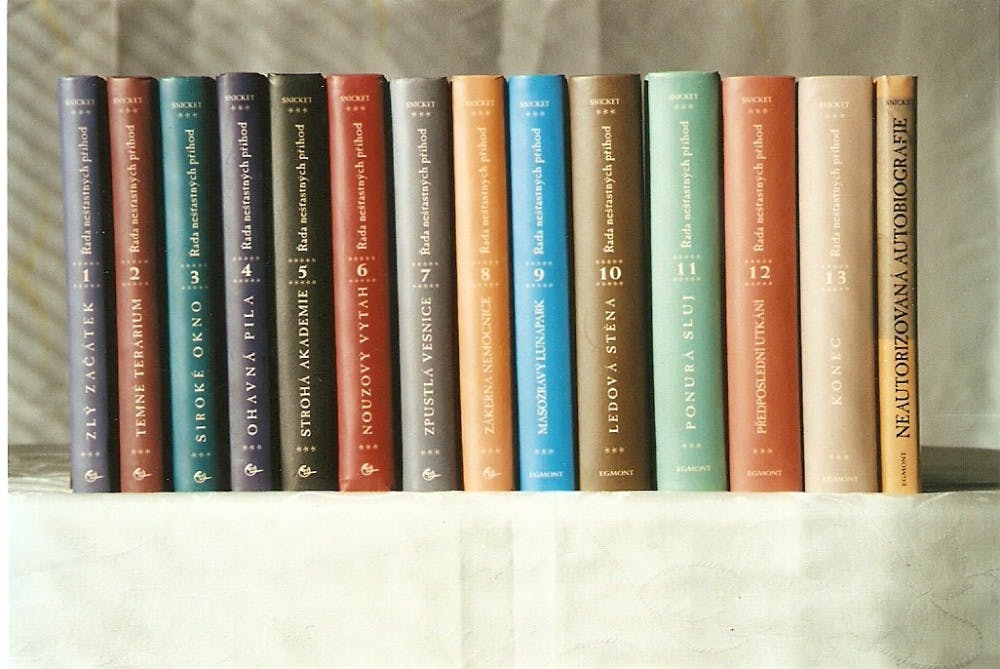If I were Lemony Snicket, I might start off this review by warning that if you are expecting a laudatory, glowing review of the A Series of Unfortunate Events Netflix series, you’ve come to the wrong article.
This is because Snicket’s epic saga is effectively un–adaptable. As a studious kid who spent the better part of his elementary school career with a book in hand, I grew up with this series. I eagerly anticipated each new tome in the woeful tale of the Baudelaire orphans, who were endlessly ping–ponged between dire situations. For myself, and many other children, it was the first series that spoke to us like adults. The use of meta–narrative, dramatic irony, flowery vocabulary and dark thematic elements felt daring and innovative. A Series of Unfortunate Events struck a unique tone—a blend of tongue–in–cheek absurdity and melancholy. A series that relies so much on playing with language, clever narration, and recurring inside–jokes cannot feel quite the same when adapted to a visual medium.
One of the most glaring issues with this series is how inexplicably cheap it looks. This was perhaps Netflix’s most anticipated production, and I expected them to throw all of their money towards making it look spectacular. Unfortunately, every episode (especially the first few) utilizes computer–generated backgrounds that frankly don’t look convincing––the actors constantly look like they’re walking through a sound stage with green screen surrounding them. Additionally, the aesthetic of the show unabashedly borrows from the works of Tim Burton (the entire series is splattered with washed out, muted colors) and Wes Anderson (symmetrical cinematography everywhere). The references to modern day vernacular, like a cringe–inducing mention of Uber, further undermine the eerie, chronologically gothic setting that populated the book series.
Neil Patrick Harris (playing the villain, Count Olaf) is the big–ticket actor of the series, and his universal likability (Ed. note: I’ve never been on the NPH train. Please theorize about what’s wrong with me in the comments below.) will undoubtedly attract people to the show. His performance is campy at best and shrill at worst, functioning on the same showmanship he uses to host award shows. The child actors that play Violet and Klaus (Malina Weissman and Louis Hynes) are adequate, but they get swallowed up by the often–clunky dialogue; the language is faithful to the book, but doesn’t flow as well off the page. Snicket’s consistent narrative voice was what made the books feel so idiosyncratic, but the series adapts that to the screen by wedging in moments of Snicket (played by Patrick Warburton) breaking the fourth wall. These interruptions disrupt the show's rhythm and plot. Warburton is such a bizarre choice for this role, as his voice is so immediately recognizable from other media that one can’t help but conjure up images of Kronk from The Emperor’s New Groove or Joe Swanson from Family Guy when he speaks.
Most unforgivably, this show sucks the real menace out of the Baudelaire story. It takes the book’s dark–comedy genre and skews too far towards quirky comedy than towards suspense or drama. Never did Neil Patrick Harris’ Count Olaf or his troupe of underlings feel genuinely murderous; never did it feel like the Baudelaire’s were in any real danger. Deaths are played for laughs, and moments of despondence aren’t given the chance to wash over the audience. The genuine empathy you felt for the orphans in the books simply doesn't translate over to the three bright eyed, precocious moppets displayed on screen. This show took one of the most bizarre and incomparable book series of this generation and turned it into a perfunctory tale of plucky siblings in the face of adversity—and that is truly unfortunate.
Photo credit: Creative Commons.

